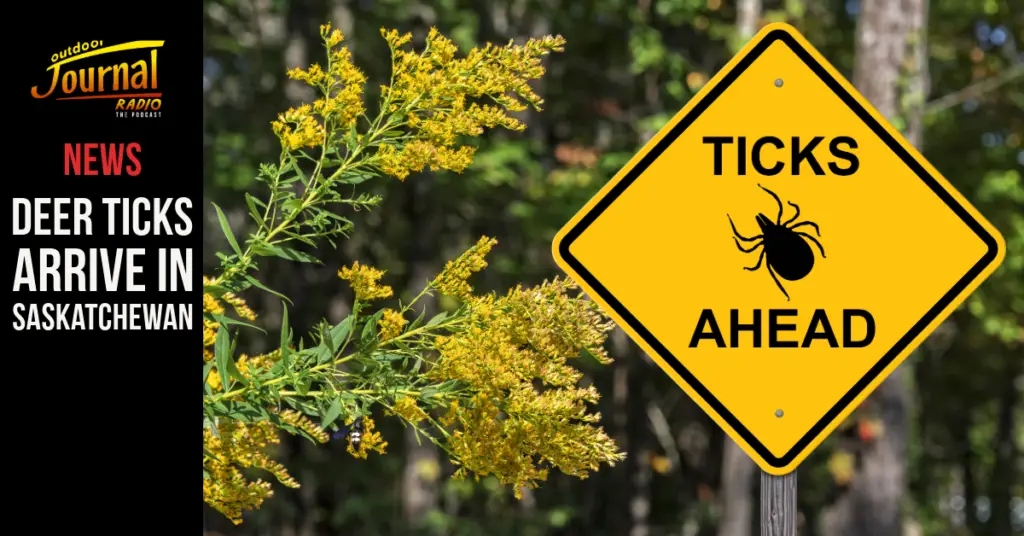As heard on episode 103 of the Outdoor Journal Radio podcast
We at Fish’n Canada have spent a lot of time talking about Deer Ticks, as our home province of Ontario has slowly become one of the country’s hotbeds for these Lyme-Disease-carrying parasites. Now, however, it seems like another province may be seeing these nasty pests establish a population.
In a great report by Aishwarya Dudha of the CBC, Emily Jenkins, a professor of microbiology at the Western College of Veterinary Medicine states that they are finding more deer ticks than ever in her home province of Saskatchewan.
This conclusion was first drawn in the fall of 2023 when scientists tracking insect populations found two Deer Ticks in Prince Albert and another in Pike Lake. These were the first deer ticks ever found in the province via active tracking, a process done by dragging a tick-catching flannel along trails.
Continuing the trend, 2023 was also a particularly high year for deer tick reports on an app known as eTick, with over three times more reports than normal.
With this in mind, Jenkins also noted that Deer Ticks are not thought to have officially established themselves in Saskatchewan, as only adult ticks have been found thus far. In 2024, her team will be monitoring closely for nymph-stage ticks, a sign that deer ticks are now being “homegrown”.

How Deer Ticks are Spreading
In the same CBC story, Jenkins stated that deer ticks move to new areas by hitching rides on migratory birds or come with pets from out of province. We have also seen stories of incredible migrations of wild animals such as Deer and Black Bear to suggest that these could be suitable hosts for moving these parasites across provincial lines.
In a past episode of Outdoor Journal Radio, we heard very similar reports from Dr. John Aucott, Director of the Johns Hopkins Lyme Disease Clinical Research Center and an Associate Professor of Medicine at Johns Hopkins University, who told us that as our climate continues to warm and the north becomes more suitable to tick survival, only the arctic may become off limits.

How to Prevent Tick Bites and Lyme Disease
When we asked Dr. Aucott how we can prevent tick bites, he told us that the number 1 prevention tool is a substance called permethrin.
Permetherin is a natural derivative of the chrysanthemum flower that, when concentrated, kills ticks on impact. What is more amazing is that, unlike traditional DEET bug spray, this substance binds to clothing and does not make contact with the skin.

Unfortunately, despite its use to treat children with head lice and a long history of being used in Canadian military uniforms, the substance is currently banned for personal use in Canada due to concerns over bees and aquatic organisms.
Besides permethrin, tick bites can also be prevented using DEET bug spray and by reducing the amount of open-skin areas that the ticks can access. This can include tucking the cuffs of your pants into your boots or your shirt into your gloves.
When you get home, it is also important to do a thorough tick check and have a hot shower if possible. Throwing your clothes in the dryer for 10 minutes or so will also provide enough dry heat to kill any lingering ticks.
For more information on Ticks, Lyme Disease, and how you can stay safe out in the field, check out our full interview with Dr. John Aucott:







